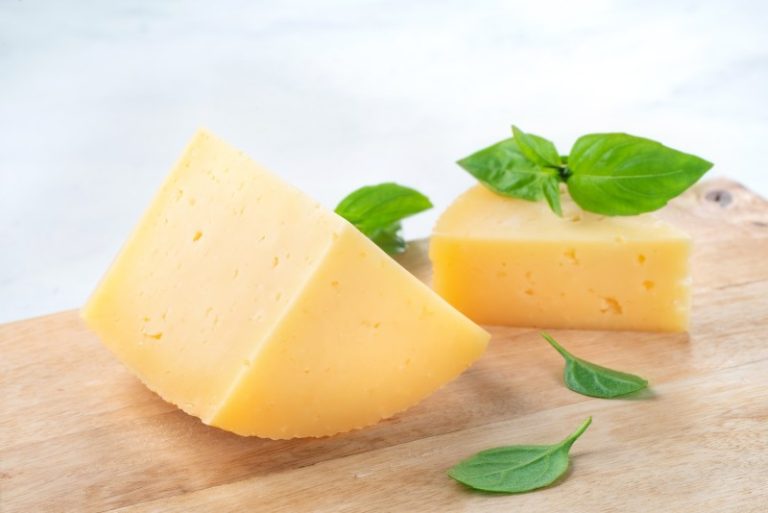What Does Tzatziki Sauce Taste Like?
Quick Answer
Tzatziki sauce is a traditional Greek sauce or dip that is made of yogurt, cucumber, garlic, olive oil, and sometimes lemon juice, and dill, mint, or parsley. It is a cool and creamy sauce with a tangy, slightly acidic bite, thanks to the yogurt and lemon juice. The cucumber adds a fresh, crisp texture, while the garlic provides a subtle depth of flavor. Depending on the addition of herbs like dill, mint, or parsley, the sauce can also have a slightly herbal note.
What is Tzatziki Sauce?
Tzatziki sauce is a popular condiment in Greek, Turkish, and various Middle Eastern and Balkan cuisines. This creamy sauce is known for its unique blend of flavors and versatile uses.
Basic Ingredients of Tzatziki
- Yogurt
- Cucumber
- Garlic
- Olive oil
- Lemon juice
- Optional herbs: dill, mint, parsley
What Does Tzatziki Sauce Taste Like?
Tzatziki sauce has a creamy, tangy flavor profile with a refreshing hit of cucumber and a pungent kick of garlic. Optional herbs like dill or mint can add nuanced, herbaceous notes, making it a balanced and versatile accompaniment to a variety of dishes.
Flavor Profile
Creaminess
Role of Yogurt in Providing the Creamy Texture
When we think of tzatziki, the first thing that often comes to mind is its luxurious, creamy texture, which can be largely attributed to its yogurt base. The yogurt envelops the other ingredients, acting as the canvas on which the other flavors paint their contributions.
Traditional Greek yogurt, which is thicker and tangier than regular yogurt, is often preferred for its ability to hold up well against the juiciness of the cucumber and the robust flavors of garlic and olive oil. The creaminess lends a satisfying mouthfeel that makes tzatziki exceptionally enjoyable whether you’re dipping, spreading, or drizzling.
Comparison with Other Creamy Sauces or Dips
Unlike mayonnaise-based dips, which can be heavy and rich, or cream cheese-based spreads, which are often overly indulgent, tzatziki strikes a harmonious balance. It offers the creaminess you crave but with a lighter, fresher profile thanks to the cucumber and optional herbs.
The tanginess from the yogurt and lemon juice also sets it apart from other creamy dips like ranch or blue cheese, which lack the zesty kick that characterizes tzatziki. Furthermore, tzatziki’s reliance on olive oil rather than butter or other saturated fats gives it a healthier edge, aligning it more closely with Mediterranean dietary principles.
Tanginess
Contribution of Yogurt and Lemon Juice to the Tangy Flavor
The tangy zing in tzatziki is a defining feature that makes this sauce an instant palate pleaser. This tanginess primarily comes from two sources: yogurt and lemon juice. Yogurt brings a cultured, acidic quality that forms the backbone of the sauce. It adds a delightful tartness that awakens the taste buds. Lemon juice, while optional in some recipes, amplifies this tartness with its natural citrusy acidity. Together, yogurt and lemon juice elevate tzatziki from a mere creamy sauce to a zesty delight that dances on the tongue.
How Tanginess Enhances the Overall Taste Experience
Tanginess serves multiple roles in enhancing the overall experience of enjoying tzatziki. First, the acidic notes cut through the creaminess of the yogurt, preventing the sauce from feeling too heavy or monotonous. This quality makes tzatziki exceptionally versatile, allowing it to pair well with a wide variety of foods-from grilled meats to roasted vegetables and beyond.
Second, the tangy qualities stimulate the palate, making each bite more engaging and flavorful. They work as a foil to richer or greasier dishes, offering a counterbalance that refreshes the mouth, much like squeezing a wedge of lemon over a piece of grilled fish. In a mezze spread or a multi-course meal, tzatziki’s tanginess helps to reset your taste buds, preparing them for the next culinary adventure.
Lastly, the tanginess can heighten the flavors of the other ingredients in the sauce. The zesty quality makes the garlic more lively, the cucumber more refreshing, and any additional herbs more aromatic, creating a medley of flavors that are both balanced and invigorating.
Garlicky Undertones
The Role of Garlic in Tzatziki
Garlic is the unsung hero of tzatziki, a seemingly modest addition that lends a rich complexity to the sauce’s flavor profile. Its aromatic, earthy presence introduces a warm depth, adding a touch of spice that makes tzatziki more than just a simple yogurt and cucumber mixture. Depending on personal preferences or specific recipes, the garlic can be minced, grated, or even roasted to vary its potency and character. Some variations use a generous amount of garlic for a robust kick, while others employ it more subtly to serve as a background note that complements the tangy and creamy elements.
Freshness as a Counterbalance to Richer Flavors
Tzatziki often finds itself paired with rich, hearty dishes-grilled meats, oily fish, or even fried appetizers. In these settings, the freshness of cucumber plays a vital role as a counterbalance. While the creamy and tangy aspects of tzatziki can cut through the richness of such dishes, the cucumber’s freshness lifts the flavor profile, adding a palate-cleansing quality. This helps to reset the taste buds, making each bite of the main course as exciting as the first.
Freshness
Importance of Cucumber in the Mix
In the medley of robust and tangy ingredients that make up tzatziki, cucumber serves as the breath of fresh air. Often grated or finely diced, cucumber brings an element of coolness and refreshment that is distinctly its own. Its natural water content lightens the texture, making the sauce more scoopable or drizzle-friendly, depending on your culinary needs. The slight sweetness and crunch of the cucumber not only contrast but also amplify the creaminess of the yogurt, adding another dimension to the sauce’s textural experience.
Herbaceous Notes
The Optional but Influential Role of Herbs like Dill, Mint, or Parsley
While tzatziki can stand alone with its basic set of ingredients, the addition of herbs like dill, mint, or parsley can take the sauce to new culinary heights. These herbs are optional but can be highly influential, each introducing a distinct layer of flavor and aroma that complements the existing elements. The incorporation of herbs adds a touch of culinary artistry, allowing you to customize your tzatziki according to your personal taste preferences or the needs of specific dishes you’re pairing it with.
How Different Herbs Modify the Basic Flavor Profile
- Dill: Known for its feathery leaves and sweet, grassy aroma, dill brings a fresh, almost anise-like flavor to tzatziki. It pairs wonderfully with the creamy and tangy aspects, adding a verdant complexity that works particularly well with seafood and poultry.
- Mint: The addition of mint transforms tzatziki into a cool, refreshing dip with a slightly sweet undertone. The bright minty notes work in tandem with the cucumber to elevate the sauce’s refreshing qualities, making it ideal for hot summer days or as a counterpoint to spicy dishes.
- Parsley: Parsley offers a more subtle, earthy flavor compared to dill or mint. It doesn’t dominate the palate but rather enhances the sauce’s natural flavors. Parsley works well in meat-heavy meals, adding a touch of freshness without overshadowing the main course.
Frequently Asked Questions
Does Tzatziki Sauce Taste Good?
Taste is subjective, but many find tzatziki sauce delicious due to its balanced blend of creaminess, tanginess, garlicky undertones, and optional herbaceous notes. It’s a harmonious combination that pleases the palate and complements a wide range of foods.
Is Tzatziki Sour?
Tzatziki has a tangy or sour note, thanks to the yogurt and lemon juice in its ingredients. However, it is not overwhelmingly sour, as the other components like cucumber and olive oil balance out the tanginess.
Why Does Tzatziki Sauce Taste Bitter?
If your tzatziki tastes bitter, it may be due to the garlic or possibly the olive oil used. Some types of olive oil can have a bitter aftertaste, and over-minced garlic can also become bitter. Ensuring you use fresh ingredients and quality olive oil can help you avoid a bitter taste.
Is Tzatziki Same as Tahini?
Tzatziki and tahini are not the same. Tzatziki is a Greek yogurt-based sauce with cucumber, garlic, and herbs, while tahini is a paste made from ground sesame seeds. While both are used in Mediterranean and Middle Eastern cuisines, their flavor profiles, textures, and uses are different.
Does Tzatziki Sauce Taste Good with Chicken?
Yes, tzatziki pairs exceptionally well with chicken, especially grilled or roasted varieties. The sauce’s creamy and tangy aspects help balance the meat’s richness, while the garlic and herbs accentuate its flavors.
Can You Eat Tzatziki Sauce By Itself?
While tzatziki is often used as a dip or a condiment, its balanced flavor profile means that it can certainly be enjoyed by itself. Some people love savoring it by the spoonful to appreciate its complex flavors.
What Tastes Best with Tzatziki Sauce?
Tzatziki is highly versatile, complementing a wide range of dishes. It pairs well with:
- Grilled Meats: Such as lamb, beef, and pork.
- Seafood: Like grilled fish or shrimp.
- Vegetables: Both raw and cooked.
- Bread: Pita or crusty bread make excellent vessels for tzatziki.
- Salads: Tzatziki can even serve as a unique, creamy salad dressing.





